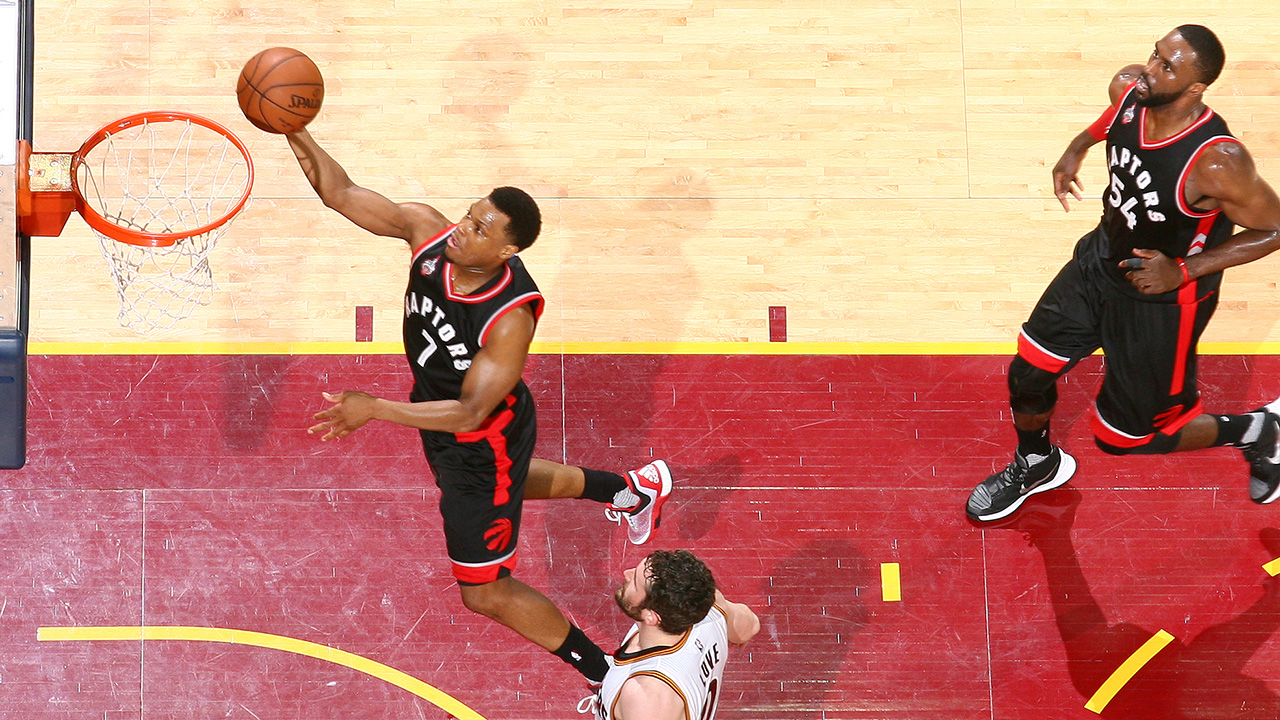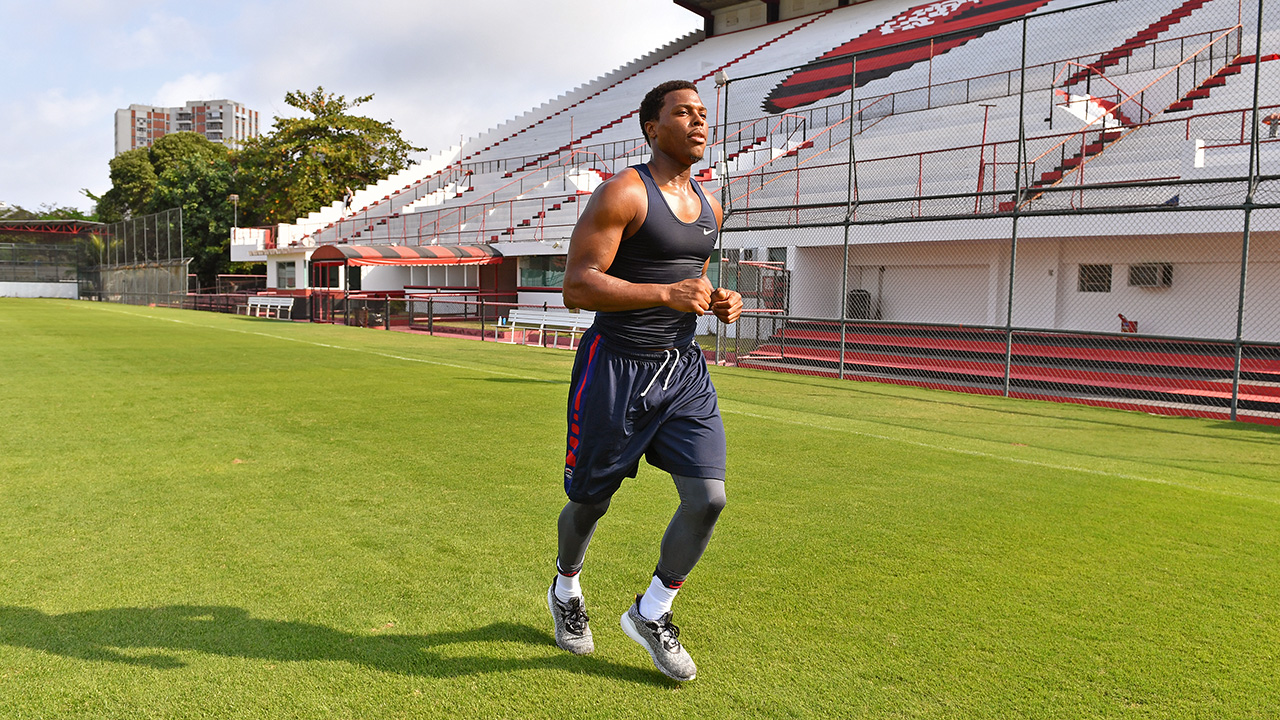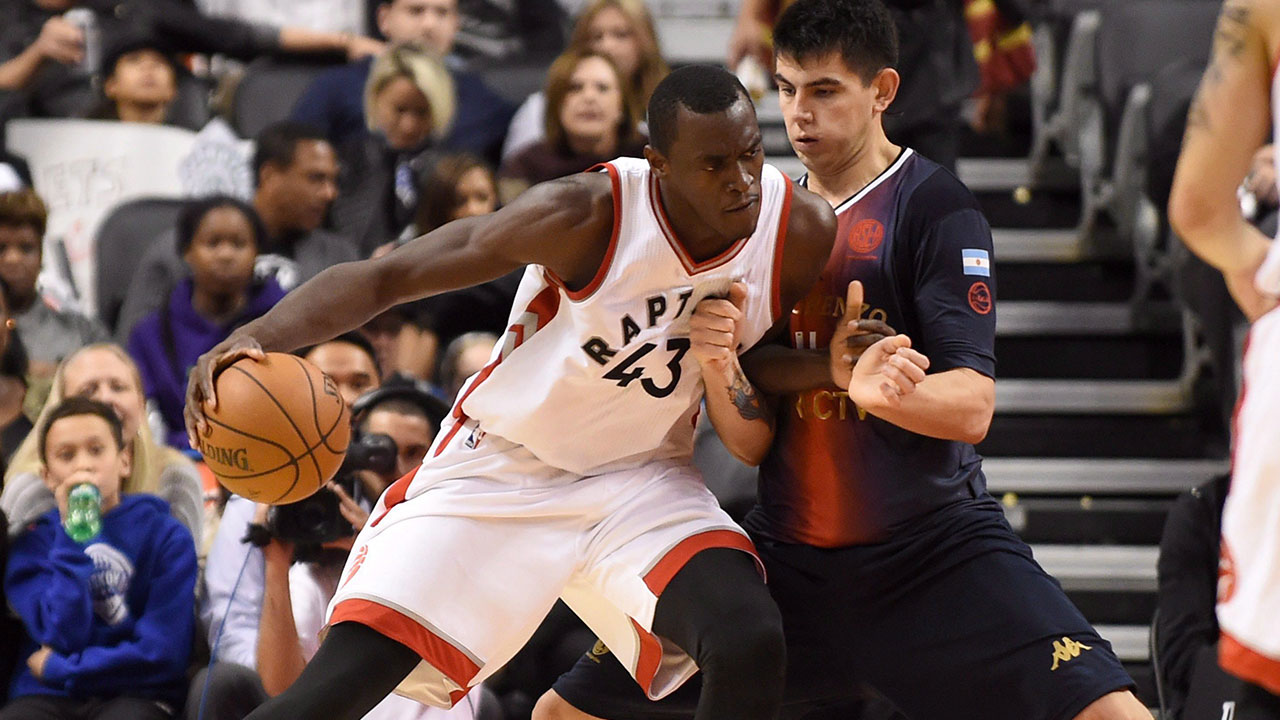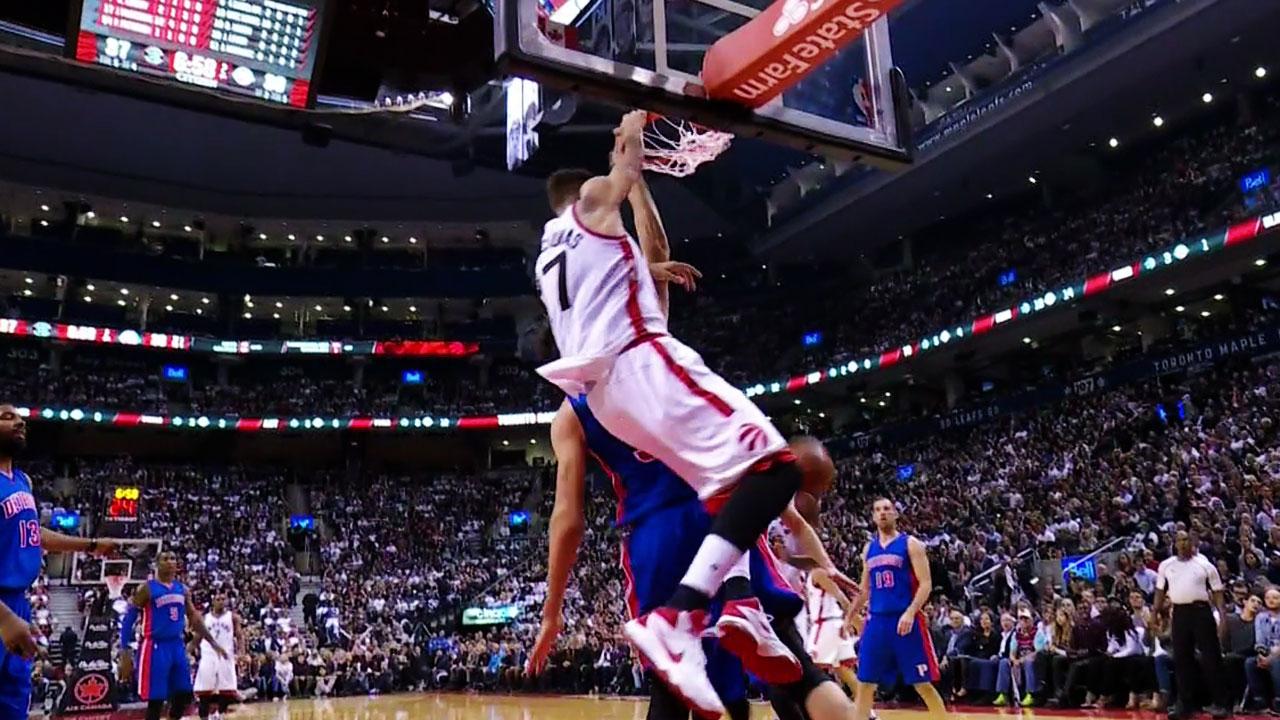Chauncey Billups remembers with near-perfect clarity the moment he realized that even though he was playing point guard in the NBA, he wasn’t yet an NBA point guard. It’s a story he’s shared with the Toronto Raptors’ Kyle Lowry many times.
In his fifth NBA season, the No. 3–overall pick in 1997 was already playing for his fourth team, his talent not yet matched by his resumé. But as he led the Minnesota Timberwolves onto the floor at the Target Center in Minneapolis to take on the Utah Jazz late in the 2001-02 season, he was armed with a false sense of security.
He was matched up that afternoon against John Stockton, who’s undoubtedly on the short list of the NBA’s best-ever point guards. But Stockton was pushing 40 and giving up all kinds of physical advantages to Billups, then 25. “I was so excited,” says Billups. “Because I never really thought [before] that, like, I was going to really kill him. But now I’m younger than him, stronger than him, faster than him, all of these things, and I got the ball. I can do my thing now.”
The feeling didn’t last, but the lesson did. By the time the aging Jazz left the building with an easy win, Billups was crestfallen. Stockton had dominated, finishing with 22 points on 13 shots, eight assists and a couple of steals. Billups scored seven points on 1-for-8 shooting while chasing the game all day, never to catch it. “I couldn’t stop him, man,” says Billups, the wonder still in his voice nearly 15 years later. “He was two steps ahead of what I was even thinking about doing. He just tricked me with every play. It was such a humbling game. I’ll never, ever forget it. That day changed my life,” Billups continues. “I said to myself: ‘Man, this thing is so much more than being bigger, stronger, faster.’ Right then I said, ‘OK, I need to be that guy.’ That was a game that kind of changed my career.”
And that’s the story of how a borderline draft bust ended up leading the Detroit Pistons to an NBA title in 2004, winning Finals MVP and remaining one of the most productive players in the game deep into his 30s. Billups played 12 more years after Stockton schooled him, almost all of them significantly more productive than the season he turned in at age 25.
Billups is one of Lowry’s best friends and a true mentor. They share the same agent, and as Lowry was breaking into the NBA and Billups was on his way out, the elder guard made a point of trying to guide his protege around some of the rough patches, of which there were many as Lowry’s legendary stubbornness and burning desire to have a team to call his own created its share of friction. Billups saw something of himself in Lowry: a player in search of the right fit for his game early in his career. And it was Billups’s guidance that helped Lowry recognize that the right fit was here in Toronto. “He’s always had my ear,” says Lowry. “It just took time for me to be able and willing to just go at it: Whatever he says, do—just fall in.”
Over the past couple of years, as Lowry has established himself as a Raptors cornerstone and an NBA all-star, their talks over golf games and summer workouts have focused on what Lowry needs to do to be one of the handful of elite point guards who can do what Billups did—play their best basketball at age 30 and beyond. It’s a short list. Stockton is at the top of it; Steve Nash is on it, too.

The insecurity Lowry played with early in his career, when he was scrapping for minutes off the bench or constantly looking over his shoulder as a starter, has been replaced by a veteran’s calm and a deep desire to maintain his current level as long possible—a goal he believes is attainable. With 10 NBA seasons in the rear-view, Lowry thinks he can play 10 more and sustain his current production for most of those years. “The game is so different now,” he says. “The training and the treatment are completely different. There’s no off-season for us. The body isn’t breaking down at 32. That’s old basketball thinking. I say it because I’m 30, but I don’t feel 30. Look at Nash. He wasn’t 30. Chris Paul is 31 and he’s playing at a high level. Myself, I’m still playing at a high level. The training we do is so different than what we did before. I want to be effective at the age of 37,” he says. “It might not be 20 a game, but it’s 17, eight and three; it’s being effective and steady. I don’t want it to be, ‘Oh, he was averaging 25. Shit, he’s averaging 10. He’s done.’ I don’t want that. People say you’re 30 years old, but if you look at it, that’s when guys get better.”
Pushing his prime into his 30s could offer some significant rewards for Lowry. Timing is everything. He can opt out of the last year of his contract after this season. It’s not a topic he plans on discussing, but the math tells a compelling story. The salary cap is due to climb to $102 million next summer. As an 11-year veteran, if Lowry stays in Toronto he would be eligible for a five-year deal that would start at about $35 million per year and escalate at 7.5 percent in each subsequent season. Other teams could offer a four-year deal with raises of 4.5 percent. How much he actually gets would be dictated by a number of factors—age being chief among them—but it’s a hell of a carrot.
Could Lowry conceivably be worth nearly $200 million? Only four other guards have matched his total of 30.4 Win Shares over the past three seasons, and all of them have max deals or—in the case of Steph Curry—are clearly headed for one. And Billups’s experience suggests Lowry isn’t likely to fall off anytime soon. Billups argues that when point guards can extend their physical prime even a little bit, their ability to think the game and lead on and off the floor makes for a potent combination. “I share that with Kyle,” he says. “It’s more than being this big, strong point guard. When you can start thinking the game, studying your opponent, you can have such an advantage for such a long time—not just a year or two. You’re going to be able to play, and play well, at an advanced age.”
There’s little doubt Lowry’s hoops acumen is peaking. In a pre-season poll of NBA GMs on NBA.com, Lowry finished fourth on a list ranking the league’s smartest players, behind LeBron James, Chris Paul and Steph Curry. “It’s all the little things he does,” says Patrick Patterson, a teammate of Lowry’s in both Houston and Toronto. “Knowing every single play, knowing where everyone should be on every play—one through five. Time, score and momentum. Game clock, shot clock. When to go fast, when to slow down. Him instilling confidence in all of us. He’s got the freedom to take the reins, free flow, do whatever on the court and do it with confidence. He pushes himself and pushes us along with him all the time.”
Raptors head coach Dwane Casey lets Lowry call almost all his own plays—a privilege earned over time—and counts on him to know all the other team’s play calls too, giving the Raptors defence a crucial head start several possessions a game. Lowry has mastered the art of figuring out what his team needs, when they need it and how to deliver it. “It’s a feel you get,” he says.

Early in his career, Lowry’s big-scoring games often came in losses. In his first year as a starter in Houston, the Rockets were 3-7 in his 10 highest-scoring games. In his first year in Toronto, the Raptors were 1-9. Last year, though, the Raptors were 7-3 when Lowry went off for 28 or more, but also 4-1 when he scored fewer than half that many. In the team’s opening-night win over the Detroit Pistons, he only scored 10 points (matching his season low from a year ago), but the Raptors won handily, with DeMar DeRozan (40) and Jonas Valanciunas (32) becoming the first pair of teammates to top 40 and 30 points, respectively, in the first game of an NBA season. “I didn’t shoot the ball well [in the 18-point win], and if I had, we would have won by 30,” Lowry says. “But sometimes it’s just: Don’t get in your own way. Don’t try to do too much. You have to find a balance. Is it my game? Is it their game? Is it my game and then their game? It’s a thin line, but it’s a thick line at the same time . . . I’m conscious of it all the time. Before the game, during the game and even after, when it’s over.”
Billups says that after his drubbing at the hands of Stockton, he became much more of a student of his craft. By the time he was in his mid-30s, he did the same things to younger guards that Stockton had done to him that afternoon in Minnesota. He’d let his man think he was containing a certain play or move just so he’d have a counter he could go to when he really needed it. He was like a pitcher changing speeds, mixing up locations and then bringing heat when the hitters start sitting on breaking balls. “It’s a great feeling, man,” he says. “You’re just controlling the game.”
Lowry plays some of the same tricks: “I might let you cut me off, because I know that will mean one of my teammates is open, or I’ll give myself up in a game to make sure my guys get going . . . You let it look like it’s going to work, but at the end of the day, I’m playing chess against their coaches.”
The idea of point guards aging like Tom Brady makes perfect sense in some ways. There is no position more intellectually demanding in basketball. The more experience you get, the more maturity you develop, the better you should be. But the flip side is that the position is typically staffed by greyhounds. Lose even half a step to advancing age and you’re no longer elite.
But Lowry believes he’s got that part figured out. He’s 18 months into the fitness and diet regimen that made “skinny Kyle Lowry” a common phrase on social media a season ago. It was adopted with the future in mind and hasn’t come without significant investment. Lowry has a full-time chef. He spends money on massage therapy, physical therapy, a nutritionist and a strength coach. “It sucks,” he says. “But you have to pay to be great.” I told him LeBron James reportedly spends more than a million dollars a year keeping his machine properly maintained. “I don’t spend that much,” he says, “but it’s a good amount. But if you’re going spend a million dollars to make $30 million, it’s a great investment.”
Reminded of Billups’s story about being schooled by Stockton, Lowry says he didn’t have an equivalent epiphany—a game when what he needed to do to make his future plans a reality became clear. He says for him the understanding came in December of 2013, when it appeared the Raptors were going into a full-scale rebuild. Rudy Gay had already been traded, and Lowry himself was on the verge of being sent to the New York Knicks, which would have been his fourth team in eight seasons. The deal fell through, and Lowry says the experience made him realize that going forward, his value wasn’t going to be found in numbers or statistics but in wins. The Raptors have played at a 53-win-per-year pace since then—best in the Eastern Conference—with Lowry as the engine.
His goal is to win an NBA title. “Winning takes care of everything,” he said on the first day of training camp. “I want to win. I want to win a championship. I want to get to that point. I want to be known as one of the best players in the league. I want to continue to grow as a leader, as an individual, as a man. I want to focus on each day, each hour, each practice, each game. I think that’s been really good for me.”

The question that Lowry will need to answer as the season unfolds and the summer arrives is if he can win a title in Toronto. Similarly, the question the Raptors or any other interested franchise will need to answer is if committing more than $30 million a year is a wise outlay for seasons 12 to 16 of Lowry’s career. In short, can they win a title with him?
Billups has walked in Lowry’s shoes. Few know better how much impact a certain kind of point guard can have in his 30s. He sees Lowry as a wise bet. “The league is young, man. So, how well can you lead?” Billups asks. “These young guys—these players who haven’t won before—what kind of effect can you really have on them? Leadership in our league is undervalued. Now you bring in a guy who is still in his prime, playing-wise, but he has some leadership qualities that can take you to the top.”
Lowry has always had to scrap to earn his spot among the NBA’s elite. Now that he’s arrived, his next battle will be pushing back time.


